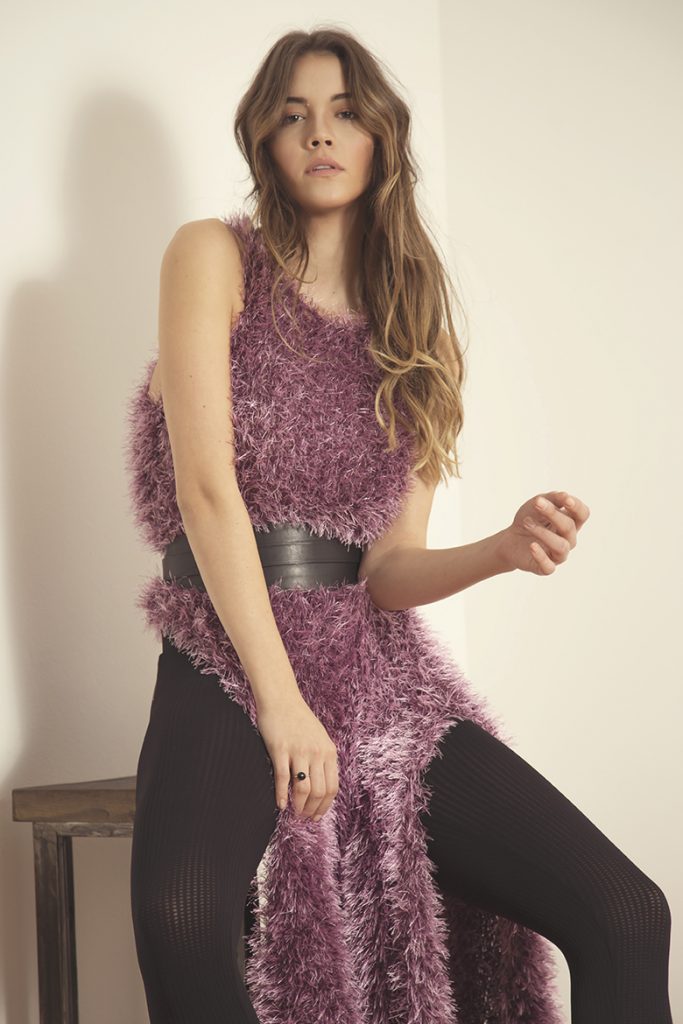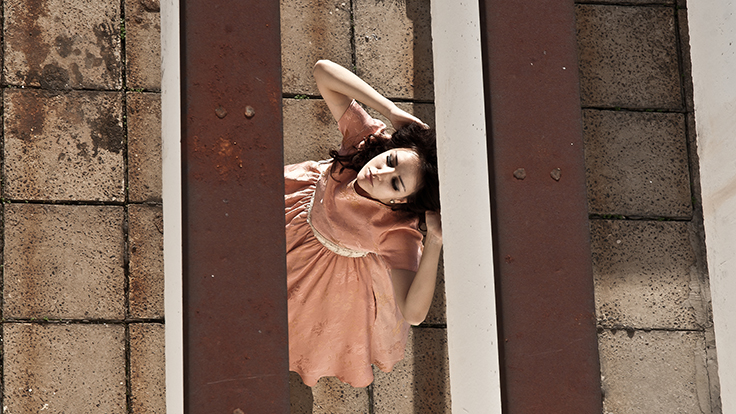Point of view
Point of view in photography simply means the position from which the camera sees the scene. Are we looking down on the subject? Are we looking up at the subject? How close are we to the subject? Is there anything between us and the subject? Every decision we make about point of view will change how viewer sees the photo.
Juxtaposition

Juxtaposition is when two objects are positioned next to each other with the intent of comparing or contrasting them. It can be, for instance, in advertising photography for hairdresser salon, a picture of girls with bad hair and amazing hair. It is strong tool when wanting to emphasize the message of a picture.
Moreover, juxtaposition doesn’t have to exist directly, it can be only implied and yet, it can be strong enough to send powerful messages.
Example of this composition is the picture on the right. Colors or even better- contrasts are great way to show juxtaposition. Another example of this is let’s say, optical illusions with big vs. small objects- for ex. people holding Sun in hand in photos. Or comparing sizes with placing them together – fat and skinny man, nature next to urban landscape and, an interesting phenomena occurring in Belgrade, and many post-communist cities I guess, fancy architecture next to the old one. There is also another way to show this with “photoshopping”, when one object becomes another, let’s say… explosion of atomic bomb “becomes” a tree and similar to that.
Becoming the Subject

A powerful point of view is when placing the viewer in the role of the subject. This means that shooting the photo from the angle of the subject. For example, a shot of surgery shown as though we were looking through the surgeon’s eyes (patient and surgeon’s hands visible but not the surgeon’s face/body). These shots allow the viewer to feel like experiencing the event first hand, involving the action in the picture. This is particularly good tool for cinematographers, for example, i remember that famous video of the Punk/Techno group Prodigy – Smack my bitch up in which the viewer becomes the actor as being given the sense as if participating in the video.
Shooting From Eye Level

Shooting a photo from eye level of the subject is the quickest way in helping viewers to connect emotionally with a photo subject. By literally putting the subject on “our level” we create an instinctual response because usually only other people of the same age are at roughly eye level with a person. This means that our instinctual response to a subject of eye level is to personify that subject even if it is not human. For instance, many nature and animal images photographers shoot so that we can identify with them – lion photographed being on the level with the viewer. I came across the photographer Frieke Janssens who made interesting portraits of children smoking cigarettes, but his shooting angle is frontal, direct, on viewer’s eyes level. It is no accident, he wanted to present those children as mature adults.
Shooting from Below

Shooting a photo from below a subject can make the viewer feel as though the subject is in control of a situation, he is looking up on the dominant even visionary figure. The simple act of looking up at a subject, can instigate the feeling of irrelevance and smallness of the viewer, and subject is becoming idolized and even elusive. This has been used not only in photography and paintings before it throughout history. For example, thrones are set higher than other chairs, judges sit on a podium, and executive desks are just a bit taller than normal desks. The low shooting angle can also give the illusion of being inside the frame if the angle is severe enough. Like almost everything in photography, this goes back to our instinctive reactions to situations. In a forest of tall trees we feel small looking up. As a child we must obey our larger parents. Shooting with an upwards angle allows us to tap into this instinctive response.
In fashion photography, for example, this angle is common – women are photographed from below as the dominant, independent, having control of the situation, and we are being made wanting to become them, because we idolize them through photographs of this type. In political campaigns examples of portraits from lower angle are numerous, perhaps the most famous portrait of Che Guevara with a eyes directed to the distance which, because of the angle seems visionary and revolutionary.
Shooting from Above

Shooting from above a subject allows the viewer to feel superior to the subject or feel protective of the subject. If the subject – a man/child/pet is looking directly into the lens, the viewer feels as if the pedestal even more. In landscapes scenes photographed from cliffs or from the top of skyscrapers, this viewpoint seems dizzying and dramatic and makes the viewer falling down into the scene and can even instigate fear of heights. One has to keep in mind that pictures shot not from front but from above or from low angles exude an atmosphere of anxiety, nervousness. The reason to that is distortion of perspective. The edges of walls are not parallel to the edge of the frame but are angled. The scene seems a much stockier, narrow, anxious and this may create new dimensions to interpreting in particular photograph.
Different Points of View
Because we always look at the world from the level of our eyes, the photos taken frontally, reflect realism and are less expressive and emotional. When taking snapshots from below, objects appear larger and more powerful than in reality and taken from above, objects in pictures are less dominant no matter how big area they occupy in image. When shooting from above or below, space gets a significant role in general atmosphere of the picture. When shooting from a low angle, more sky is revealed and the spaciousness of the landscape is emphasized. We should experiment with the angle of shooting, sometimes circulating around the subject in order to find the right point of view. Photos of children are often much better when shot from a child’s point of view rather than an adult’s, or for example, in macro photography, an ant seen from below is a real challenge. In some quotes I found a good analogy to this in words of the famous photographer, Ansel Adams: “A good photograph is knowing where to stand”.




